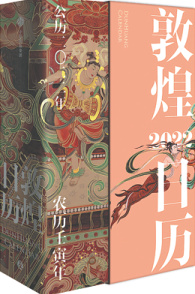Citic Press unveils Dunhuang calendar

A new calendar highlights the relics in Dunhuang, a cultural hub on the ancient Silk Road. [Photo provided to China Daily]
A Dunhuang calendar for the new year was recently published by China's Citic Press.
Containing photos of 14 sculptures and 169 paintings, created by five artists who copied the sculptures and frescos in Mogao Grottoes in Dunhuang and Yulin Grottoes in Guazhou, Northwest China's Gansu province, the calendar offers glimpses of the Buddhist art treasures.
The photos in the calendar are divided into seven categories, including faithfully copied works according to the frescos' current appearance, copied works in which artists have filled slightly broken parts with lines for completeness and clarity, copied works that present the frescos as they would have been when they were finished hundreds of years ago, and copied works that combine the elements of the original frescos and the artists' new ideas.
The copied works are mainly illustrations of sutras, flying apsaras (female mythical figures), paintings of various forms of Buddha and sculptures of deities, among others, which are all important cultural relics of Dunhuang, according to Yu Chi, director of the executive office of Dunhuang Art Institute, the publisher's partner for the calendar.
The arrangement of the paintings has also been specifically chosen. On special days, such as festivals, the calendar features paintings that explain the meanings of the festivals, Yu says, adding that on Jan 1, for example, the copied work is a painting of the "nine-colored deer", which symbolizes goodness and kindness, "a New Year blessing" for the readers.





 Print
Print Mail
Mail
